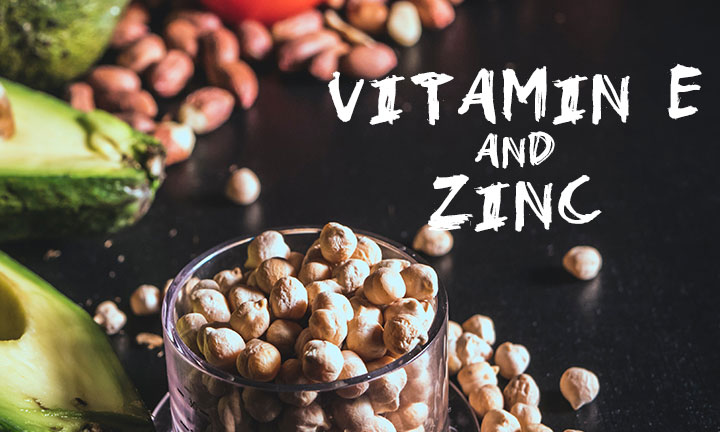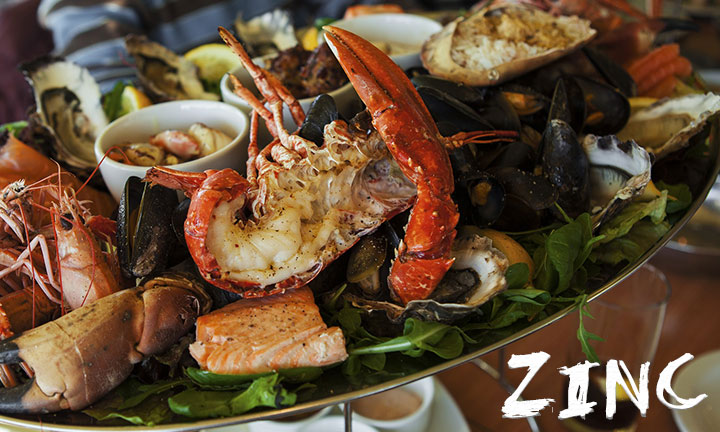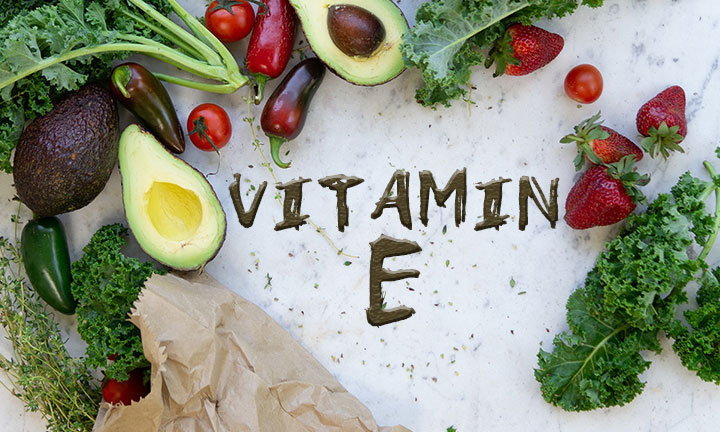19th, September 2019 | Oh Jinna
The Best Sources of Vitamin E and Zinc for the Eyes

WHAT ABOUT VITAMIN E AND ZINC?
Zinc and Vitamin E are powerful auxiliary components in keeping our eyes healthy. Though they are not mainly the leading element as Vitamin A, they both strongly assist Vitamin A in aiding for good eyesight.
ZINC AS THE HELPER MOLECULE

Zinc is known as the“helper molecule”. This vital mineral essential needed for the body because of its wide range of functions. Moreover, adequate amount of zinc in our body is required in maintaining our sense of taste and smell,make our immune system strong, assists in wound healing, helps build proteins, co-factoring critical enzymes, functions as a neurotransmitter as a medium of communication among cells and it is a major component in generating DNA.
- Zinc as a key nutrient for expected mothers
Zinc is a key nutrient during pregnancy to support the mother and child to ensure normal growth and proper development. And it is crucial for childhood as well to minimize stunted growth. Furthermore, zinc is mandatory to have a regular consumption of zinc to maintain a healthy body for zinc has no particular storage system.
- Working together with Vitamin A
However, our eyes are quite abundant with Zinc in which it is fixated in retinas and choroids, the vascular tissue layer below the retina. Vitamin A and Zinc works together to create a certain pigment, melanin.
Melanin protects our eyes and skin from harmful UV rays. Additionally, researchers has found that people consuming foods rich with Zinc had shown lower risks of emergent progressive age-related macular degeneration and improve visual acuity.
- Too much Zinc intake
Too much of anything can be harmful. Be careful in zinc intake too much and lesser intake of zinc is dangerous. Recommended daily intake for zinc is about 11 milligrams for males ages 14 and older; and 8 milligrams for women rages 9 and up.
Pregnant and lactating women daily zinc intakes should be at 11-13 mg. Infants daily zinc intake need to be two to three milligrams and children ages from one to eight at five milligrams. According to Institute of Medicine, maximum amount of daily zinc intake should not go beyond 40 mg.
Aside from that, consuming too much zinc may lead to an acute and chronic tendencies. Acute harmful fallouts of high zinc consumption may include abdominal cramps, diarrhea, loss of appetite, headaches and nausea.
Chronic high zinc adversaries vary from minimal copper absorption, low high-density lipoproteins levels, malfunction of iron due to chemical alteration and compromised immune system. Zinc supplementation has also affect medications. It can block both zinc and the medication absorption. These medications include antibiotics, diuretics and penicillamine (for rheumatoid arthritis).
- Zinc deficiency issues
Zinc deficiency is meet by low dietary factors such as eating processed food more often than meat, fruit and vegetables. Vegetarians though are somewhat zinc deficient; however, they only need to double their zinc intake with food choices that are rich in zinc.
Here’s a five very enticing food you can choose from to not to miss out zinc and hit your everyday zinc quota.
- Food rich in Zinc is highly diverse it would include seafood like Clams, Crabs, Lobsters and Oysters. Oysters are bivalves essentially packed with iron, selenium, vitamin C, B vitamins and is the powerhouse of zinc. It contains the highest amount of zinc at 5.3 mg per average oysters.
- Poultry and Meat consist of Chicken,Beef, Lamb and Lean Pork and about 3 ounces of these skinless poultry, lean, fat free chunks can provide about 0.9 daily recommended zinc. 1 cup of Dairy Products provides 7% and one serving of Fortified Cereals can give 25 % of your daily zinc quota.
- For low calorie diet, opt for Whole Grains, Beans, Seeds and Nuts that covers from Lentils, Hemp Seeds, Chickpeas, Black beans, Peanuts, Pumpkin Seeds, Pecans, Pine nuts, Cashews top it on for some low-fat Kefir and yoghurt. For Vegetarians, you can opt for Tofu Shiitake mushrooms, Garlic, Kale, Broccoli.
- Let’s not forget desserts, dark chocolate is in it! Yes, dark chocolate has a minuscule amount of zinc. It has about 70-85% of cacao content has 6% (0.9)and 60-69 % cacao content has 5% (0.8 mg) an ounce. Though it is always a temptation for one more bite, stick to an ounce a day, remember your sugar count anyway there is always another day for another treat!
LET’S GET TO KNOW MORE ABOUT VITAMIN E

Vitamin E is not very likely to appear on your daily dose of healthier eyes but little that we know Vitamin E is quite comparable with Vitamin A.
Vitamin E functions as storage, absorption and application of Vitamin A in its absence.Also, it protects and counteracts large Vitamin A overdoses.Vitamin E is a fat-soluble made of eight compounds namely tocopherols and tocotrienols. A Fat-soluble compound requires lipid to dissolve and absorb.
The most active Vitamin E is in the form of Alpha-tocopherols and on natural forms they are at chemical formula d-alpha-tocopherol which the only composition of Vitamin E that is beneficial, synthetics, however, are highly discouraged.
In addition to that, Vitamin E has several functions. First, it helps in the red blood cells formation. Then, it also buffers blood clotting by widening blood vessels. Lastly, it aids the utilization of vitamin K in the body.
- Vitamin A as an important antioxidant
Vitamin E is a notorious antioxidant as its main function meaning it defends body tissue caused by free radicals (loose electrons) which destroys organs, tissues, and cells including eye cells.
High Vitamin E diets may help decrease the threat of progressing advanced stages of age-related cataracts, age-related macular degeneration and visual acuity loss and it is also believed to contribute in specific conditions associated to aging, though there are some researches that see no correlation between these conditions and Vitamin E, nevertheless, there’s a need to include a healthy dosage of Vitamin Eto your diet to maintain strong immune system against bacteria and viruses.
- Vitamin E deficiency
The deficiency for Vitamin E is unlikely since there’s a widespread of variability however not getting enough may lead to vision problems, muscle weakness, inability to breakdown fats, premature birth, reduced newborn weight, kidney and liver impairment.
- Vitamin E consumption
Recommended daily Vitamin E intake is about 8-10 mg for children. And 15 mg for adults, while 19 mg for pregnant and nursing women. Maximum intake should not reach 1500 IU. On the contrary, high Vitamin E dosage is harmful as its anticoagulant property may affect blood clotting functions, blood thinners, certain medication such as chemotherapy and antidepressants.
- Sources of Vitamin E
Vitamin E is highly predominant in Wheat germ oil as it comes from the center of a wheat kernel that contains about 23 nutrients including Vitamins E, A, D, and B. Seafood like Abalone and 4 mg of it has 27% of daily recommended intake of Vitamin E.
Moreover, there’s still a widespread of good sources of Vitamin E rich foods. A bowl of leafy green vegetables dubbed as food for the eyes such as avocados, broccoli and spinach. Meanwhile, mango, tomato, kiwi, sunflower seeds, vegetable oil (corn oil, cottonseed oil, peanut oil, safflower oil, olive oil) and Nuts like almonds are enough to fill your daily dose of Vitamin E. Eat well!
REFERENCES:
http://www.aoa.org/patients-and-public/caring-for-your-vision/diet-and-nutrition/zinc
http://www.ncbi.nlm.nih.gov/pubmed/8835055?dopt=Abstract
https://academic.oup.com/jn/article/130/5/1500S/4686427
http://www.ncbi.nlm.nih.gov/pubmed/11594942?dopt=Abstract
https://ods.od.nih.gov/factsheets/Zinc-HealthProfessional/
https://www.webmd.com/vitamins/ai/ingredientmono-982/zinc
https://www.ncbi.nlm.nih.gov/pmc/articles/PMC4863273/
https://www.naturalmedicinejournal.com/journal/2011-12/research-behind-vitamin-e
http://www.healthline.com/nutrition/foods-high-in-vitamin-e/

Leave a Reply
You must be logged in to post a comment.